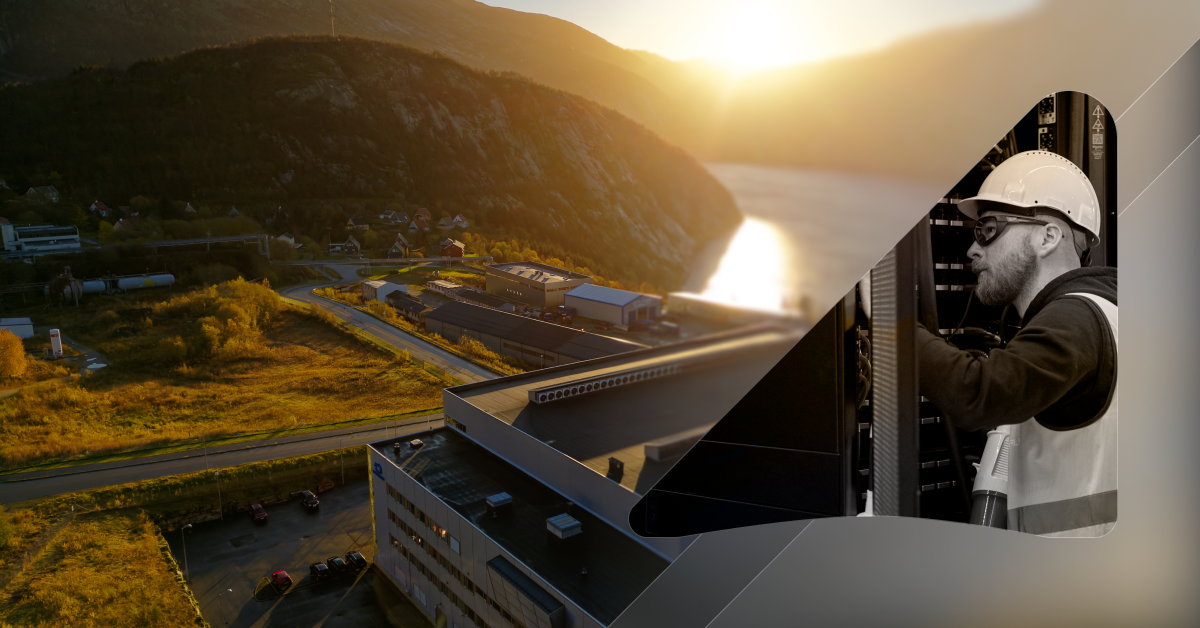As AI systems move from experimental to mission-critical, a new strategic imperative is taking shape. To learn more about the views of leaders in the business and technology space in Europe, we commissioned a survey in the UK, France, and Norway. Our survey reveals that future-proofing AI at scale requires a holistic, modular, and federated approach to deliver on the promise and opportunity of AI in Europe.
Beyond security and performance, leaders deploying AI are increasingly focused on maintaining control over their AI infrastructure and where their data lives. More than half (54%) of respondents identified data center location as a critical factor in AI deployment and close to two thirds (64%) cite operational autonomy as a main motivation for sovereign infrastructure.
But our survey also reveals a bigger picture. It’s not just about location. Respondents equally emphasized cost-effectiveness (54%), customer service (51%), and flexibility and scalability (50%) as key priorities.
Ultimately, what emerges is a broader ambition around AI resilience, combining operational autonomy with adaptability, reliability, and competitiveness. In other words, our key takeaway is that respondents are looking for investments in AI infrastructure that is future-proof.
Defining AI resilience
In traditional engineering disciplines, resilience has often been operationalized via redundancy and disaster recovery, whereas business resilience leans more heavily on how an organization can adapt and continue delivering value under external changes (geopolitical, market, or supply-chain).
In the AI era, technical and business resilience are converging. External forces, from increasing demand to shifting geopolitical dynamics, are accelerating both the momentum and complexity of AI adoption in Europe. Resilience for AI workloads has evolved beyond traditional optimization strategies. Today, it also means managing compute costs and energy demand, ensuring access to cutting-edge AI technology innovation, and building an ecosystem that can adapt to rapid change.
In practice, AI resilience encompasses:
- Data sovereignty (understanding where and under whose laws data resides)
- Model continuity (maintaining the ability to train and deploy AI using the most advanced and up-to-date technologies)
- Adaptable infrastructure (achieving operational independence while scaling efficiently and competitively)
Birger Steen, CEO of NORSAR, a research foundation specializing in seismology and seismic monitoring, summarizes the shift:
“Sovereignty is about ensuring continuity, control, and resilience in AI operations. If a supplier relationship ends or access to parts of the internet is disrupted, you should still be able to operate using local or regional alternatives.”
The rate of AI adoption at scale has shifted focus beyond access to compute alone and may now be determined by where data lives, what parts of the AI infrastructure is autonomous, how modular and adaptive the hardware and software are, and whether operations can remain competitive over time.
Why location matters
Survey results show data center proximity and trust in AI workloads are connected. Across the regions, location is considered an important factor for selecting the right AI infrastructure:
- UK: 94% of respondents agree
- France: 92% of respondents agree.
- Norway: 82% of respondents agree.
This geographic awareness likely stems from growing anxiety over geopolitical volatility and the increased awareness of the economic benefits of AI systems. The desire for resilience has moved the debate from “cloud first” to “AI infrastructure on our terms.”
There is more than control at stake. A critical factor to building trust in AI infrastructure is the sustainability challenge combined with rising energy demand and costs. At Nscale, we target data center locations because of their proximity to abundant renewable energy sources. For instance, our data center in Glomfjord, Norway is 100% powered by renewable energy. By building infrastructure where clean energy is plentiful on the grid, Nscale can help ensure that customers’ AI workloads operate efficiently and sustainably — not just today, but into the future.
Modular AI supply chain resilience
Today, AI hardware performance evolves daily and the value of GPUs can shift almost overnight. Resilience depends on flexibility by design. A modular approach to AI infrastructure allows organizations to deploy quickly, iterate, and scale without over-committing to fixed architectures. According to our survey, half of senior European stakeholders say that scalability and flexibility to meet future AI workload demands are very important, and nearly two-thirds of IT leaders agree.
Nscale Principle Solutions Architect Chris Coates explains,
“Many customers begin with minimal redundancy to gain immediate access to AI capabilities, then layer in resilience later through modular expansion. This incremental model ensures that resilience can evolve alongside performance and demand, rather than having systems that are less flexible and unable to adapt over time.”
At the same time, partnering with providers that are vertically integrated strengthens resilience further by bringing more of the value chain under direct control. From manufacturing and assembly through to data-center design and operations, a “ground-to-cloud” partner offers another layer of reliability. Together, modular architecture and vertical integration form the backbone of resilient AI workflows at scale. Organizations need systems that can adapt to rapid hardware cycles, withstand supply-chain shocks, and continue delivering consistent AI performance even as global dynamics shift.
AI skills dependency
While AI infrastructure control is a visible goal, Steen warns that the true dependency lies in human capital:
“If you don’t have enough local talent who understand how to design, build, and run AI infrastructure, then your capacity to operate independently is limited.”
Survey respondents and experts alike cited talent shortages as a significant barrier to achieving resilience. This highlights that AI resilience is as much about people as platforms and building domestic expertise is essential to sustaining independence.
According to the European Parliament:
“The growing skills gap in the EU, with almost half of the population lacking basic digital skills, including AI skills, poses a significant challenge for the future that needs to be addressed for the EU to maintain its competitiveness and manage regional disparities.”
Accenture also reports that 36% of European workers don’t feel adequately trained to use AI efficiently, a leading cause for why 56% of large European organizations have yet to scale their AI investments. A strong commitment to advancing AI skills development regionally cannot be an afterthought. Partnering with trusted AI specialists such as Nscale enables organizations to close near-term skills gaps while accelerating the secure, sustainable deployment of AI workloads across the value chain.
Designing for self-sufficiency and competitiveness
As AI becomes the engine of modern business, resilience has shifted from a technical safeguard to a strategic imperative. Every key decision, forecast, and customer interaction increasingly will depend on AI workloads running seamlessly. If those systems fail or become inaccessible due to global disruptions the impact cascades across entire organizations.
True resilience means ensuring AI models, data, and infrastructure can operate in a dynamic and competitive environment while ensuring safeguards are in place, securing not just uptime but long-term strategic confidence.
About the 2025 Nscale AI Survey
Nscale engaged with a cohort of 1,250 senior AI decision-makers drawn from large enterprises, as well as AI start-ups and scale-ups operational for up to five years, across the UK, France, and Norway. This comprehensive study, conducted in partnership with research house Censuswide, explores their perspectives on the infrastructure choices AI leaders are making as they build for the future. Complementary interviews were also conducted with senior decision-makers across the wider AI and technology ecosystem for additional insights and context.







.png)


.png)
